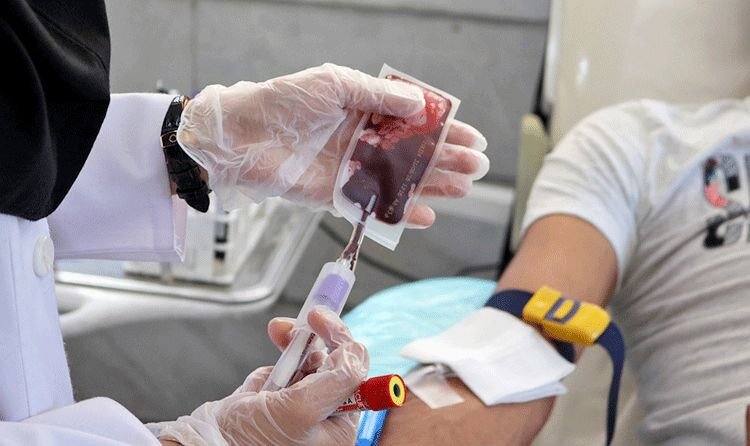WHO lauds IBTO for services to patients with rare blood types
WHO lauds IBTO for services to patients with rare blood types
TEHRAN –The World Health Organization representative, Jaffar Hussain, has admired the Iranian Blood Transfusion Organization’s efforts and expertise in providing services to patients with rare blood types.

The official also commended IBTO services in supplying healthy blood voluntarily to Iranians as well as Afghan refugees, IRIB reported.
WHO representative made the remarks on Wednesday while addressing a ceremony held to mark the national rare blood day. The official went on to announce the WHO's readiness to cooperate with IBTO in providing services to patients with rare blood diseases.
According to Mehdi Karbasian, an official with IBTO, currently, some 358 units of rare blood are frozen and stored in the Iranian Blood Transfusion Organization, of which 100 units are very rare.
The rare blood units are frozen at a temperature between -60 and -70 °C and can be stored for as long as 10 years.
IBTO is WHO regional training authority
In 2024, Bashir Haji-Beigi, the IBTO spokesman, said IBTO is still known as a regional training authority of the World Health Organization in blood transfusion medicine.
Haji-Beigi said conducting nucleic acid testing (NAT), a molecular technique for screening blood donations to reduce the risk of transfusion-transmitted infections; antibody screening to ensure the recipient and the donor’s blood are compatible to prevent complications from blood transfusion; as well as genetic sequencing using Next Generation Sequencing (NGS) method for human leukocyte antigens (HLA) to check tissue compatibility and facilitate hematopoietic stem cell transplantation for patients are among the activities that have been put on the agenda since last year.
4.7% rise year on year
A total of 2,327,997 Iranians donated blood over the past Iranian calendar year (March 2023-March 2024), an increase of 4.7 percent compared to the year earlier.
Tehran and Fars provinces made the largest contributions accounting for more than 16 percent and more than 7 percent of the total blood donation, respectively, IRNA quoted Haji-Beigi as saying.
Last year, the highest growth in blood donation was recorded in the province of Lorestan with 22 percent, followed by North Khorasan with 16 percent, and Kohgiluyeh and Boyer-Ahmad with approximately 13 percent.
The overall blood donation rate was over 54 percent in the country last year with Semnan (69 percent), Yazd (64 percent), and Qom (63 percent) provinces ranking the highest.
Women’s share of blood donation was equal to four percent. A total of 102, 907 women donated blood which had increased compared to the previous year. However, women are expected to get more involved in blood donation.
Women in Lorestan province, nine percent, had the highest contribution followed by North Khorasan, almost eight percent, and Sistan-Baluchestan, over seven percent.
Last year, the blood donation rate reached 27 per thousand people. The highest rate was recorded in Mazandaran province with over 40,000 people donating blood. Semnan province, over 39,000, and Yazd province ranked second and third.
MT/MG
source: tehrantimes.com